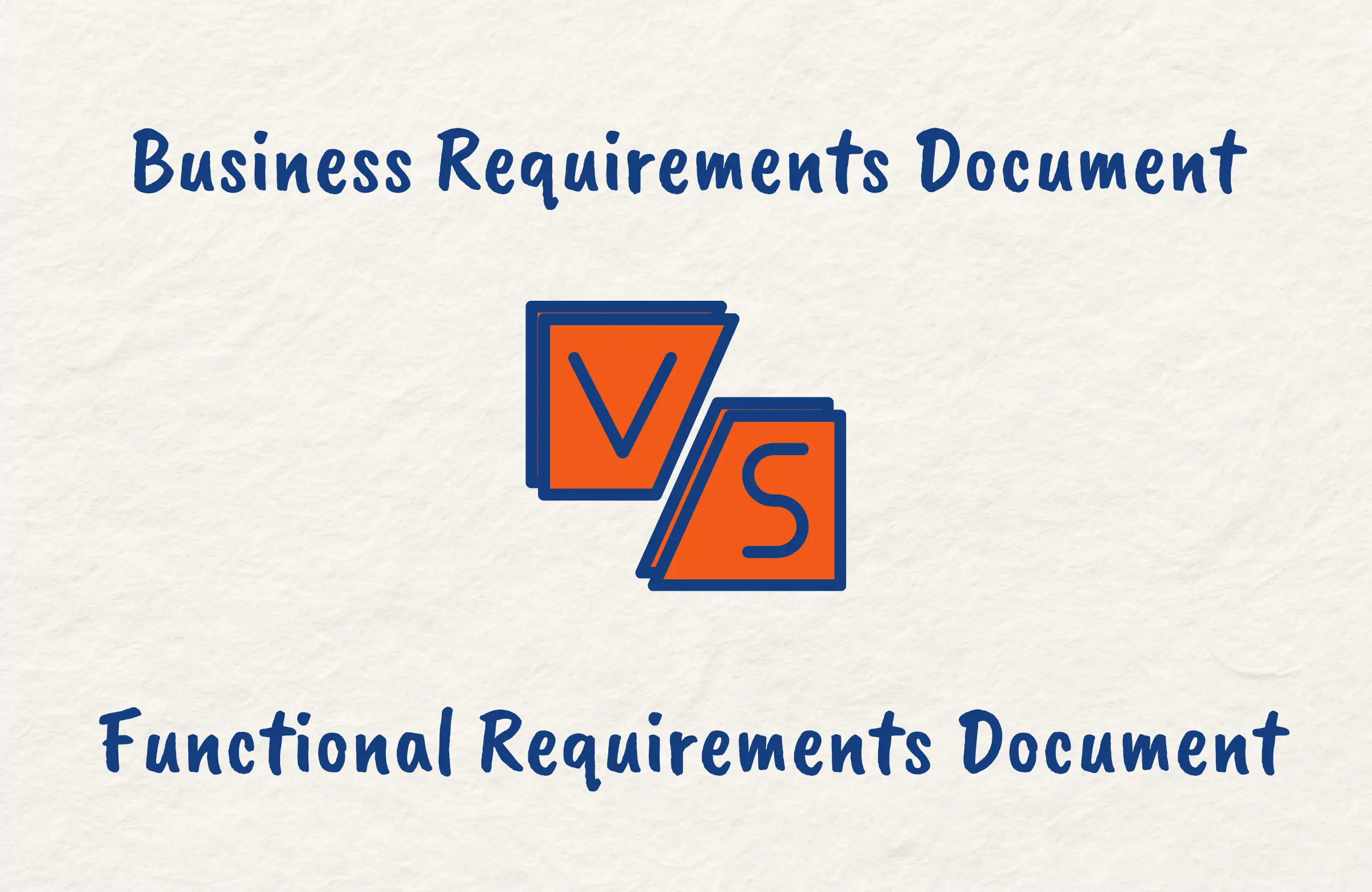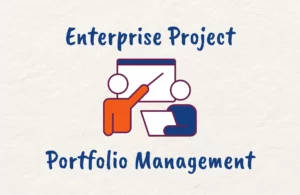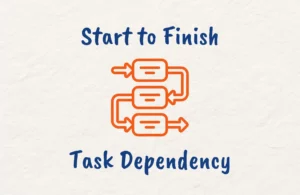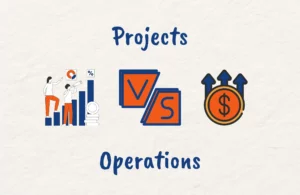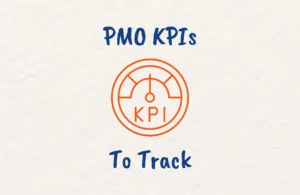Developing comprehensive requirements documents is crucial when starting a new software project. This is usually done using two types of requirements documents which are the Business Requirements Documents (BRD) and Functional Requirements Documents (FRD).
These documents both have distinct purposes in the overall project lifecycle. While the BRD focuses on the high-level business needs that the project aims to provide, the FRD details the technical specifications of the solution the project is to deliver.
Both of these documents are key in software development, and understanding the differences between them will ensure you create the right documents for the right scenario.
In this article, we will compare BRD vs FRD covering their components as well as when you ideally need either one of them. You’ll learn the key differences between these requirement documents as well as guidance on how to develop them for your project.
Key Difference Between BRD and FRD
Bottomline Upfront: The main difference between a Business Requirements Document (BRD) and a Functional Requirements Document (FRD) is that the BRD focuses on defining high-level business needs and goals for the product, while the FRD provides detailed technical specifications for how the system will meet those business requirements.
In a nutshell, the BRD takes a business perspective, while the FRD approaches requirements from a technical angle.
What are Business Requirements?
Business requirements capture the essential business needs that the project aims to address by outlining the high-level goals and needs of a project.
They provide crucial context as you start planning your project, describing the business objective and intended outcome.
Business requirements gather inputs from all stakeholders like customers, team members, and vendors to determine the project’s scope and purpose. They help identify the target audience and define what success looks like.
Well-defined business requirements also enable the project team to come up with the right solutions and plan the necessary steps.
What is a Business Requirements Document (BRD)?
A Business Requirements Document (BRD) captures the high-level business requirements for a project in a single document. It outlines the business goals, target audience, product scope, assumptions, and solution expectations.
The BRD is created during the planning stage to help align project stakeholders. It provides the context needed for the team to estimate timelines, costs, and resource needs.
The BRD serves as an agreement between the project sponsor and the team on the project’s desired outcome.
This document is often created by the Business Analyst after discussions with key stakeholders and the final BRD is approved by project sponsors and team managers.
Since it details the critical business needs driving a project, the BRD acts as a reference throughout the project lifecycle, and team members can refer back to it to ensure they are meeting all documented business needs.
Objectives of a Business Requirements Document
The BRD is a fundamental reference tool that plays a critical role in setting the project vision, guiding effective execution, and ultimately driving the achievement of business objectives.
The main objectives of developing a Business Requirements Document (BRD) include:
1. Define Project Scope
The BRD sets clear boundaries on what the project will deliver and what is out of scope which prevents scope creep.
2. Align Stakeholders
By detailing the business needs, goals, and deliverables, the BRD ensures all stakeholders share the same expectations.
3. Guide Execution
The BRD acts as a guide for the team to build solutions that fulfill the documented business requirements.
4. Enable Estimation
With detailed business requirements, the team can estimate realistic timelines, costs, and resources needed.
5. Measure Success
The goals and metrics in the BRD provide standards with which to measure the project success.
6. Reduce Risk
Identifying assumptions and constraints early on allows the team to develop contingency plans to mitigate risks.
Components of a Business Requirements Document
A Business Requirements Document (BRD) contains several key components that provide a comprehensive description of the project goals and requirements.
The main components of a BRD are:
- Project Background: This section provides an overview of the project including the purpose, scope, and business opportunity.
- Business Objective: The business objective describes the specific business goals this project aims to achieve.
- User Personas: Outlines the target users and stakeholders who will interact with the end products as well as their needs and pain points.
- Business Requirements: Lists the critical business requirements and success criteria for the project.
- Scope and Limitations: Defines the boundaries of the project, along with any constraints or limitations.
- Assumptions: Identifies the assumptions or hypotheses underlying the project requirements.
How to Write a Business Requirements Document
Creating a comprehensive Business Requirements Document (BRD) is key to aligning all stakeholders and preventing scope creep.
Here are some tips for writing an effective BRD:
- Gather Requirements: Interview stakeholders from all roles to gather and understand the business needs and goals for the project.
- Define the Scope: Define boundaries and clearly outline what the project will entail and more importantly, what it will not include.
- Document Goals: List detailed business goals this project aims to achieve. Ensure they are specific, measurable, achievable, relevant, and time-bound.
- Identify Deliverables: Outline the tangible outcomes that will be delivered through the project implementation.
- Assess Assumptions: Note the hypotheses, constraints, and dependencies that can impact the project plan.
- Prioritize Requirements: Rank business requirements in order of importance and criticality to the project’s success.
- Describe Milestones: Outline major checkpoints for deliverable completion along with dates and metrics for success.
- Review and Approve: Get buy-in on the BRD from all stakeholders before finalizing.
What are Functional Requirements?
Functional requirements define the capabilities and processes that a system must provide to meet the business needs outlined in the Business Requirements Document.
Functional requirements detail the functionality that must be built into the software to enable users to accomplish their tasks and goals and the interactions that users will have with the system.
Some examples of functional requirements include:
- The system shall allow users to update their profile information
- The system shall send notification emails when a new order is placed
- The system shall provide an admin dashboard with user analytics
Unlike high-level business requirements, functional requirements go deep into the granular details of how the system should operate, outlining the technical features it must have.
They serve as a guide for developers and testers to build and validate the required functionality.
Well-defined functional requirements are crucial for delivering software that meets end-user and business expectations.
What is a Functional Requirements Document (FRD)?
A Functional Requirements Document (FRD) outlines the functional features, capabilities, and processes of a software application in detail.
The FRD translates the high-level business requirements from the Business Requirements Document (BRD) into specific technical requirements that the software must have.
It describes user interactions, system behaviors, input and output formats, performance parameters, and more.
The FRD is written by Business Analysts and System Architects during the planning phase. It guides developers by providing granular requirements to design and build the system.
Unlike the BRD which focuses on business needs, the FRD serves as the blueprint for the software’s functionality and design ensuring that the application developed meets the business goals outlined in the BRD.
Objectives of a Functional Requirements Document
The key objectives of a Functional Requirements Document (FRD) are:
- Translate Business Needs: The FRD takes the high-level business needs outlined in the Business Requirements Document (BRD) and converts them into technical requirements.
- Guide Development: The FRD provides the detailed functional requirements that developers need to design and build the system.
- Define Expected Functionality: It clearly defines all the capabilities, features, and system behaviors required for the product.
- Reduce Ambiguity: By detailing every interaction and use case, the FRD leaves no room for ambiguity or gaps in expected functionality.
- Enable Accurate Estimation: The FRD allows developers to accurately estimate development effort and resource needs.
- Facilitate Testing: Testers use the FRD requirements as inputs for test scenarios to validate that the system works as expected.
Components of a Functional Requirements Document
A Functional Requirements Document (FRD) includes the following key components:
- Overview: Provides background context on the project and business goals from the BRD.
- Functional Requirements: Outlines detailed requirements for each feature along with use cases. Often grouped by actor or user personas.
- Non-Functional Requirements: Covers system attributes like security, availability, performance, and compliance.
- Interaction Design: Describes the user interface behavior and workflow diagrams.
- Integration: Details of how the system will integrate with other applications and databases.
- Validation Criteria: Defines metrics, tests, and acceptance criteria to validate that requirements are met.
- Appendices: These may include UI prototypes, process flows, data models, or other supporting documents.
How to Write a Functional Requirements Document
Creating a robust Functional Requirements Document (FRD) is key to building software that meets business and user needs.
Here are some tips for writing an effective FRD:
- Analyze the Business Requirements: Review the Business Requirements Document to understand the business goals, target users, and high-level functionality expected.
- Define the Scope: Clearly state what features and functions the system will and will not include to set expectations.
- Gather and Detail Requirements: Interview stakeholders to gather detailed input on system behaviors and functionality. Document use cases.
- Specify Technical Requirements: Provide detailed technical requirements including system architecture, integrations, data models, interfaces, and performance needs.
- Include Non-Functional Requirements: Define quality attribute requirements like security, reliability, compliance, and UX.
- Use Diagrams: Supplement requirements with UI design diagrams, workflow diagrams, entity relationship diagrams, etc.
- Define Verification Criteria: Clarify how requirements will be validated with metrics, tests, demos, and acceptance criteria.
- Prioritize and Organize: Categorize requirements by component/feature and assign priority.
- Review with Stakeholders: Get feedback from business and technical teams to ensure the FRD is comprehensive and accurate.
BRD vs FRD: Key Differences
While both the Business Requirements Document (BRD) and Functional Requirements Document (FRD) are important for software projects and serve complementary purposes, these purposes happen to be different
Here are the key differences between a BRD and FRD:
Purpose
A BRD outlines the business context, objectives, and needs driving the project while the FRD provides granular system specifications to meet those business needs.
Scope
The BRD scope is broad, providing the business case and goals. The FRD scope on the other hand is narrow, specifying technical system requirements.
Audience
BRDs are for all stakeholders to understand business needs while FRDs are for developers to understand technical requirements.
Author
BRDs are authored by Business Analysts and FRDs are authored by technical teams like systems analysts.
Timeline
The BRD is written earlier in planning to capture needs while the FRD is written later for system design.
Contents
BRDs detail business requirements, goals, and product vision while FRDs detail functional requirements, features, system attributes, and UI specifications.
Priority
BRDs prioritize from a business value perspective while FRDs prioritize from a development perspective.
Abstraction Level
BRDs are abstract and focused on the business perspective. FRDs on the other hand are detailed and focused on the technical perspective.
Measuring Success
BRDs define metrics for measuring business success while FRDs define technical validation criteria.
Traceability
FRDs trace back to elements within the BRD to ensure alignment.
When to Use BRD vs FRD
Determining when to create a Business Requirements Document (BRD) versus a Functional Requirements Document (FRD) depends on the phase of the product lifecycle:
Planning Phase
The BRD is developed first during the initial planning stage and helps to establish the business case and high-level needs that the project aims to address.
Analysis Phase
In the analysis phase, the BRD requirements are further refined and broken down. The Business Analyst creates supplementary docs like user stories and use cases.
Design Phase
The technical team starts creating the Functional Requirements Document in the design phase based on the approved BRD which provides the technical specifications for development teams.
Development Phase
Developers rely on the FRD to understand the detailed functional requirements as they start building the system architecture and writing code.
Testing Phase
The FRD requirements are used by QA testers to create test cases to validate that the system meets all documented functional requirements.
Implementation
During implementation, the BRD serves as a guide for end-user training and communication of new system capabilities as per business needs.
Bottomline, the BRD guides the initial planning and analysis whereas the FRD is essential during the design, build, and testing stages. Understanding their timing helps teams leverage these documents’ full potential at the right phases.
BRD vs FRD Examples
For a clearer understanding of the difference between Business Requirements Documents (BRD) and Functional Requirements Documents (FRD), let’s look at examples of each:
Business Requirements Document Example
The BRD captures the key business needs and goals at a high level without technical details. A BRD for an e-commerce customer portal may outline:
Business Goal: Increase customer retention by 15% in 6 months
Target Users: Existing customers
Requirements:
- Customers can track order status
- Customers can view order history
- Customers can manage payment methods
- Customers can access self-service returns
Success Metrics:
- Increased repeat purchases per customer
- Decreased service call volume
- Increased customer satisfaction ratings
Functional Requirements Document Example
The FRD for the customer portal will provide the granular requirements including:
- Users can view order details including date, items, total amount, status
- Return requests form with fields for order #, item(s) to return, return reason, pickup address
- Payment methods section lists card brand, last 4 digits, expiration date
- Order history displays orders sorted by date in responsive table
- Portal accessible 24/7 with 99% uptime
The FRD provides the detailed functional requirements for developers to build the system.
Conclusion
Whether you’re managing a software project or developing the application, understanding the distinct purposes of a Business Requirements Document and a Functional Requirements Document is key.
A well-defined BRD captures the business goals and needs while a detailed FRD provides the technical specifications.
While both are essential for aligning stakeholders and guiding development, BRDs focus on the business perspective while FRDs focus on the technical angle.
Keeping their objectives and differences in mind will enable your team to leverage these powerful documents effectively.
FAQs
Who Writes an FRD Document?
A Functional Requirements Document (FRD) is typically written by a Business Analyst or System Analyst during the planning and design phase.
They work closely with various stakeholders like customers, product managers, and development teams to gather detailed functional requirements to include in the FRD.
The Business or Systems Analyst then authors the final document, which serves as a blueprint for developers and testers during system implementation.
Does a BRD Include Functional Requirements?
No, a Business Requirements Document (BRD) does not include detailed functional requirements. The BRD captures high-level business needs, goals, and product scope at a broad level. It does not go into granular technical specifications.
Functional requirements are documented separately in a Functional Requirements Document (FRD) which serves as the bridge between the business and technical perspectives. The FRD translates the BRD business needs into functional system requirements.
Is BRD Used in Agile?
While comprehensive Business Requirements Documents (BRD) are more common in waterfall development, they can still provide value in Agile projects. Agile teams typically create a leaner BRD focused on high-level goals, scope, and priorities.
This lightweight BRD gives the product owner and team alignment on the vision and business value to guide iterative development. So an abbreviated BRD is useful for Agile, while detailed requirements emerge in user stories during sprints.
Is a BRD Waterfall or Agile?
The extensive Business Requirements Document (BRD) traditionally associates with waterfall development. However, BRDs can still provide value in Agile, just in a more lightweight, flexible form.
Agile BRDs focus on high-level goals and vision. Detailed requirements get defined in user stories during sprints. So while comprehensive BRDs suit waterfall, abbreviated BRDs that set the product direction can support Agile development as well.

